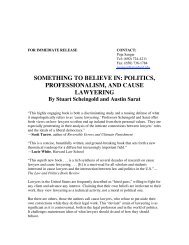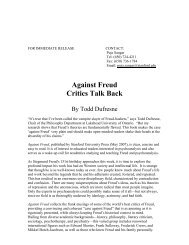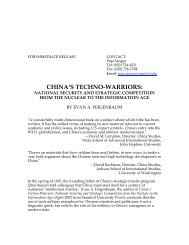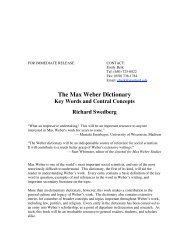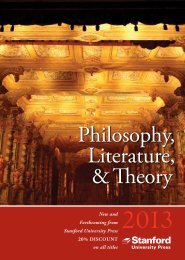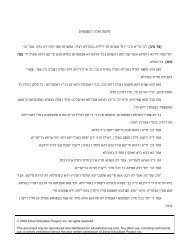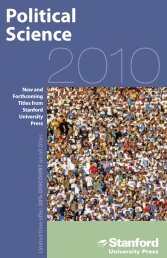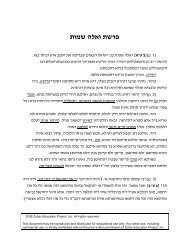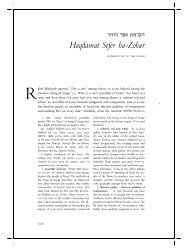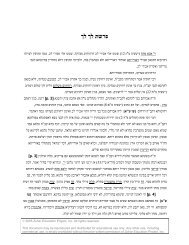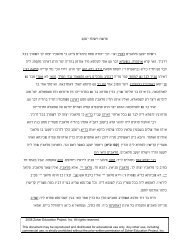Front Matter (PDF) - Stanford University Press
Front Matter (PDF) - Stanford University Press
Front Matter (PDF) - Stanford University Press
Create successful ePaper yourself
Turn your PDF publications into a flip-book with our unique Google optimized e-Paper software.
scribal errors or glosses, but some represent what appear to be better<br />
simply<br />
When I identify an apparently better reading, I check if it is shared<br />
readings.<br />
con®rmed by several reliable manuscripts and witnesses. If it is, I consider<br />
and<br />
for the printed text.<br />
substitutingit<br />
the centuries, Sefer ha-Zohar has been revised by countless scribes and<br />
Over<br />
who tried to smooth away the rough edges of the text by adding an<br />
editors<br />
phrase, correctingan apparent syntactical mistake, or taminga<br />
explanatory<br />
neologism by substituting a more familiar, bland term. Often, relying on<br />
wild<br />
variants, I decide to remove these accumulated layers of revision, thereby<br />
the<br />
more original text. I seek to recover the Zohar's primal texture and<br />
restoringa<br />
¯avor.<br />
cryptic<br />
the early manuscripts preserve unusual, strikingwordingthat is revised<br />
If<br />
``corrected'' by several later manuscripts and the printed editions, I tend to<br />
or<br />
with the older reading. Often, according to the more reliable manuscripts, a<br />
go<br />
rabbi creatively paraphrases a Talmudic saying. Some of the later<br />
Zoharic<br />
and the printed editions may then restore this sayingto its exact<br />
manuscripts<br />
form. In such cases I emend the printed text in favor of the Zohar's<br />
Talmudic<br />
formulationÐoriginal in both senses: older and creative. In the com-<br />
original<br />
I cite the Talmudic sayingon which the paraphrase is based, so that<br />
mentary<br />
can see the transition and trace the imaginative process.<br />
readers<br />
do not claim to be fully restoring``the original text of the Zohar.'' There<br />
I<br />
never have been any such thing, since the text probably emerged over<br />
may<br />
years, written and distributed piecemeal. However, through painstaking<br />
many<br />
of the variants, I am able to scrape away some seven hundred years of<br />
analysis<br />
and corruption, and at least approach that elusive, hypothetical<br />
accretion<br />
This revised Aramaic text of the Zohar, the basis of my translation,<br />
original.<br />
be made available via the Internet and may be downloaded for study and<br />
will<br />
examination. 11<br />
scholarly<br />
translation is inherently inadequate, a well-intentioned betrayal. In the<br />
All<br />
of the second-century sage Rabbi Yehudah, ``One who translates a verse<br />
words<br />
is a liar; one who adds to it is a blasphemer.'' 12 Furthermore, the Zohar<br />
literally<br />
notoriously obscureÐperhaps the most dif®cult Jewish classic to translate. It<br />
is<br />
composed in Castile mostly in Aramaic, a language no longer spoken in<br />
was<br />
Spain. 13 The author(s) concocted a unique blend of Aramaic out of<br />
medieval<br />
At the website of <strong>Stanford</strong> <strong>University</strong> <strong>Press</strong>: < www.sup.org>.<br />
11.<br />
BT Qiddushin 49a.<br />
12.<br />
On the Zohar's Aramaic, see Scholem, Kabbalah, 226±29; Tishby, Wisdom of the<br />
13.<br />
1:64±68.<br />
Zohar,<br />
Translator's Introduction<br />
xii<br />
Translation and Commentary<br />
traditional sources, especially the Babylonian Talmud and Targum Onqelos (an



